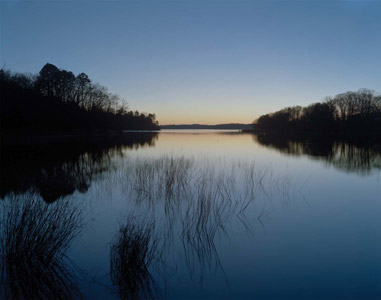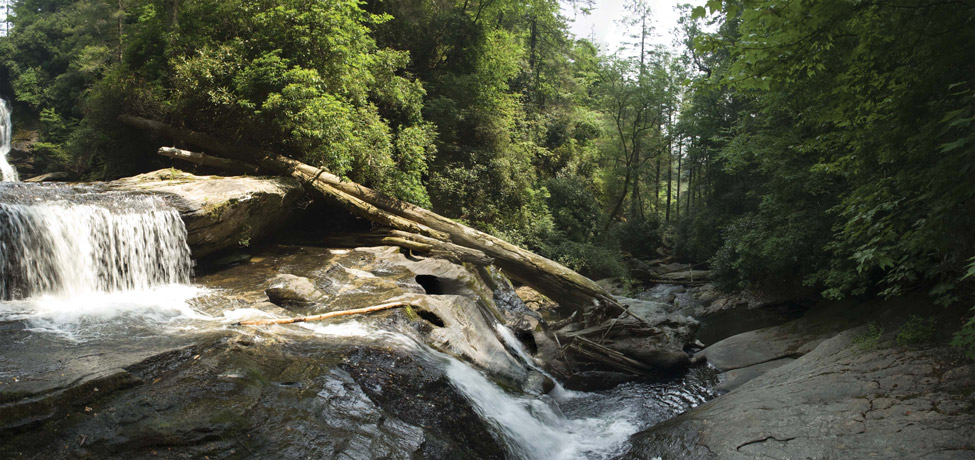pictures from an expedition
story by Neil Caudle and photography by Anderson Wrangle
For two years, photographer Anderson Wrangle has explored the watershed of the Savannah River, beginning in the mountains, where trickles wander into creeks, and working his way downstream in his canoe. He goes in every season, in all kinds of weather, and mostly he goes alone.
“I lug a huge Deardorff four-by-five, five-by-seven view camera, a giant tripod, and a lot of other gear,” he says. “It’s a lot to ask of people to put up with a photographer and his equipment, and waiting forever while I set up a shot.”
Wrangle calls his project an expedition. He explores a territory and records what he finds on large-format color-negative film. Scenic rivers. Eroded banks. Derelict old dams. Trout fishermen and bathers in sun-dappled streams. He takes us there and makes us stop and consider what it means.
So far, the exploration has progressed to Lake Hartwell, a spectacular caesura on the way to the sea. And Wrangle hopes to finish the journey. The river, Wrangle says, runs through the geography of his life. His father lives in Cashiers, North Carolina, at the headwaters of the Savannah; his mother is from Savannah, Georgia; and her ancestors lived along the river beginning in the late 1730s. Wrangle and his brother spent much of their childhood at their grandmother’s house near the river.
“I had all of these personal connections to the river,” Wrangle says, “and I had taken photographs on it for a dozen years. So setting out to explore this watershed was the most natural thing in the world.”
When he began the project, Wrangle knew very little about the river and the landscape that sustains it, he says. But pursuing his art drew him into science.
“My level of hard knowledge about the natural world is relatively low,” he says, “but I keep running into people who can teach me, and that’s the part that excites me.”
One of those people is Karen Hall, a faculty member in the Department of Forestry and Natural Resources and state coordinator of the S.C. Master Naturalist Program. Hall can look at Wrangle’s photographs and tell him in detail about the landscape they reveal. For him, he says, this makes the experience richer. He plans to create an archive of his photographs and make them available to anyone who studies the watershed. Yes, he works alone. But he sees himself as one of many—artists, scientists, and scholars—who document the natural world.
“In the history of art, landscape more than other forms is a massive group project,” Wrangle says. “You’re contributing to something much larger than your own body of work.”
What interests him most is how water moves through a complex landscape and defines it. When we visit a point in the mountains where the Chattooga River begins, we may not understand how that point connects to the river system as a whole, through a series of streams, rivers, and lakes, all the way to the sea.
“It is one thing to look at a map and to read about a place,” Wrangle says, “but the actual experience of the place typically defies an easy understanding. I am attempting to make a composite picture, a document, of that more complex relationship.”
Anderson Wrangle is assistant professor of art in the College of Architecture, Arts, and Humanities. Funding for his watershed project has been provided by a research grant from the college. His most recent exhibition is showing at SKYDIVE.




